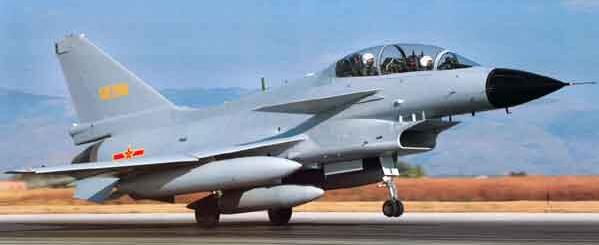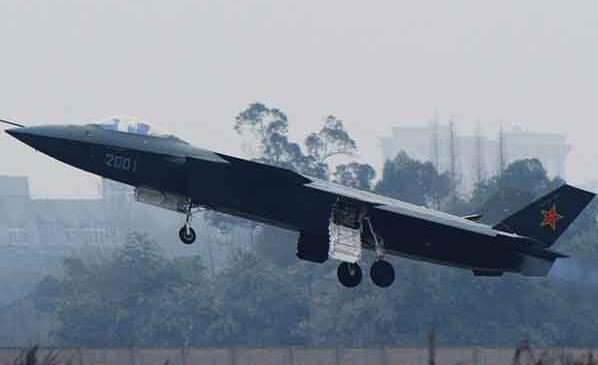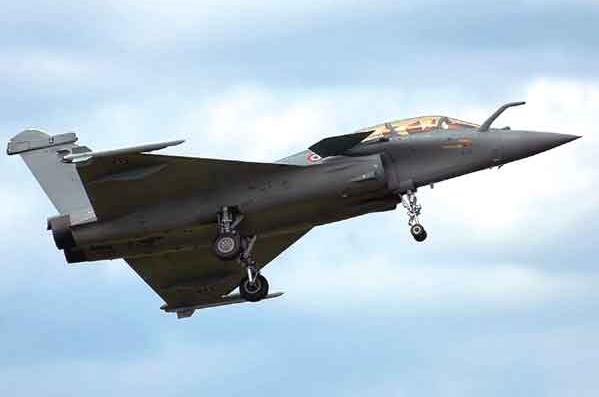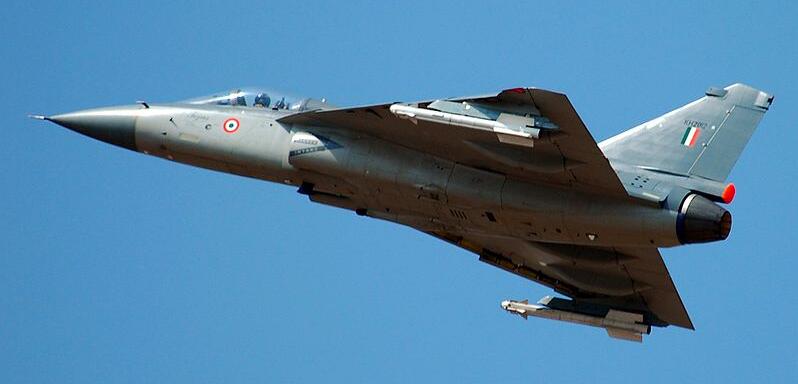 【2014年文章】中国空军遥遥领先印度空军【下】
【2014年文章】中国空军遥遥领先印度空军【下】
Chinese Air Force way ahead of IAF
译文简介
2014年印度空军中将纳拉亚·梅农发表的文章
正文翻译
Training in the PLAAF
中国空军的训练
中国空军的训练

There has been a qualitative improvement in the training and operational philosophy of the PLAAF. Pilot training lasts for four years as an undergraduate and is divided into two distinct parts. The first part lasts for 20 months at one of two basic flying schools (Changchun and Banding), and consists of military, political, cultural/literary, and physical training, as well as parachute training. The second part lasts 28 months at one of the ten flying academies, each of which has 3-4 flying regiments and consists primarily of special technical training. The first phase is divided into five months of aeronautical theory, political courses, flight theory, navigation, aerodynamics, air-to-air gunnery, aircraft structure, flight dynamics, aircraft engines, instruments, weather, and two practice parachute jumps, as well as command, control, and science training.
中国空军在训练和作战理念上已经有了质的改进。飞行员培训需要进行四年的本科学习,四年又分为两个不同的部分。第一部分为期20个月,可以从两所基础飞行学校(长春和保定)选择一所,包括军事、政治、文化、文学和体育训练,以及降落伞训练。第二部分为期28个月,可以从10所飞行学院中选择一所进行飞行训练,每所飞行学院有3-4个飞行团,以特殊技术训练为主。第一阶段分为五个月的航空理论、政治课、飞行理论、航海学、空气动力学、空对空射击、飞机结构、飞行动力学、飞机发动机、仪表、天气、两次跳伞练习、指挥控制和科学训练。
The next phase of training lasts for one year and consists of 155 hours in the primary trainer CJ-6. Six courses are taught, including aerobatics, navigation, and formation, circuit, and instrument flying. There is a 30 percent dropout rate in this phase. The last phase (advanced training), lasts for 12 months and consists of 130 flying hours on the F-5. Trainee pilots train in attack, navigation, circuit, formation, aerobatics, and instrument flying, as well as participate in exercises. This portion has a ten percent attrition rate. The total attrition rate during the three phases is 55 percent. Graduates receive a degree in military science and have the status of a Deputy Company Pilot Officer. Outstanding graduates may become Company Grade Officers. Those who fail are given the opportunity to train in the appropriate school as Ground Support Officers.
第二个阶段训练持续一年,包括在初教-6进行155小时的初级训练。一共有六门课程,包括:特技飞行、导航、编队飞行、环行飞行、仪表飞行。这一阶段的退学率为30%。最后阶段(高级训练),持续12个月,要求驾驶有130个小时的F-5。见习飞行员接受攻击、导航、绕行、编队、特技飞行和仪表飞行训练,并参加各种训练。这部分的退学率为10%。这三个阶段的总退学率是55%。完成所有训练的毕业生将获得军事科学学位,可以做副连级干部。优秀毕业生可能成为连级干部。而那些没有毕业的人有机会在合适的学校接受训练,成为地面支援干部。
第二个阶段训练持续一年,包括在初教-6进行155小时的初级训练。一共有六门课程,包括:特技飞行、导航、编队飞行、环行飞行、仪表飞行。这一阶段的退学率为30%。最后阶段(高级训练),持续12个月,要求驾驶有130个小时的F-5。见习飞行员接受攻击、导航、绕行、编队、特技飞行和仪表飞行训练,并参加各种训练。这部分的退学率为10%。这三个阶段的总退学率是55%。完成所有训练的毕业生将获得军事科学学位,可以做副连级干部。优秀毕业生可能成为连级干部。而那些没有毕业的人有机会在合适的学校接受训练,成为地面支援干部。
The PLAAF has also established age limits for the various types of pilots. Once a pilot has reached the mandatory age or fails to meet medical qualifications, his flying is terminated. One of the most common problems cited, however, is that the PLAAF does not have a mechanism to absorb these pilots into a non-flying assignments. The age limits laid down are 43-45 for fighter and ground attack pilots (the average age is 28), 48-50 for bomber pilots, 55 for transport pilots, 47-50 for helicopter pilots and 48 for women pilots.
中国空军也为各种类型的飞行员制定了年龄限制。一旦飞行员达到法定年龄或未能达到医疗资格,将会终止飞行员的飞行资格。然而,其中有个最常见的问题,中国空军没有一种机制来吸纳这些飞行员参加非飞行任务。战斗机和地面攻击飞行员的年龄限制为43-45岁(平均年龄28岁),轰炸机飞行员48-50岁,运输机飞行员55岁,直升机飞行员47-50岁,女飞行员48岁。
中国空军也为各种类型的飞行员制定了年龄限制。一旦飞行员达到法定年龄或未能达到医疗资格,将会终止飞行员的飞行资格。然而,其中有个最常见的问题,中国空军没有一种机制来吸纳这些飞行员参加非飞行任务。战斗机和地面攻击飞行员的年龄限制为43-45岁(平均年龄28岁),轰炸机飞行员48-50岁,运输机飞行员55岁,直升机飞行员47-50岁,女飞行员48岁。

Operational Philosophy of the PLAAF
中国空军的作战理念
PLAAF’s operational philosophy states that battlefield dominance will depend on an integrated struggle for air, space, information and electro-magnetic superiority. This came about after Chinese military was jolted out of its earlier dependence on mass and size, by the demonstrated predominance of air power in the 1991 Gulf war and the subsequent operations by the Western powers. China realised that a smaller, better equipped force created through improved training, equipped with high-technology stealthy aircraft and an overall capability of rapid response, were essential in modern warfare. As per established principles, air superiority is a prerequisite for victory in war. However, the PLAAF does not assert that achieving absolute air superiority in all stages of combat across all theatres is necessary. Instead, it aims to achieve air superiority to achieve its tactical obxtives.
中国空军的作战理念是,战场优势在于取得空中、空间、信息和电磁的综合优势。1991年海湾战争以及随后西方列强的军事行动深深震撼了中国,于是中国军队决心逐渐摆脱早期对军队规模和量级的依赖。中国意识到,在现代战争中改进训练,装备高科技隐形飞机,提升全面快速反应能力是必不可少的。根据既定原则,制空权是战争胜利的先决条件。然而,中国空军认为并不需要在所有战斗阶段都实现绝对的空中优势。相反,空军获得空中优势的目标是实现战术目标。
中国空军的作战理念是,战场优势在于取得空中、空间、信息和电磁的综合优势。1991年海湾战争以及随后西方列强的军事行动深深震撼了中国,于是中国军队决心逐渐摆脱早期对军队规模和量级的依赖。中国意识到,在现代战争中改进训练,装备高科技隐形飞机,提升全面快速反应能力是必不可少的。根据既定原则,制空权是战争胜利的先决条件。然而,中国空军认为并不需要在所有战斗阶段都实现绝对的空中优势。相反,空军获得空中优势的目标是实现战术目标。
The PLAAF places primary emphasis on achieving air superiority by attacking the enemy forces, equipment, bases, and launch pads used for air raids whether on land or sea. In the initial stages of a war, the PLAAF will endeavour to attack enemy air bases, ballistic missile bases, aircraft carriers and warships equipped with land-attack cruise missiles before enemy aircraft can take-off or air strike launched by other means. Another means of achieving air superiority will be to carry out attacks to destroy and suppress ground-based air defence systems and air defence command systems. In addition, defensive operations will be an important component of air superiority throughout a campaign.
中国空军主要强调通过攻击敌方不论是陆地还是海上会对空军造成威胁的部队、设备、基地和发射台来实现空中优势。在战争的最初阶段,中国空军将尽力攻击敌人的空军基地,弹道导弹基地,航空母舰和装备对地攻击巡航导弹的战舰,在敌人起飞或以其他方式发动空袭之前发起攻击。另一种获得空中优势的方式是发动攻击摧毁和压制陆基防空系统和防空指挥系统。此外,防御作战将是整个战役中空中优势的重要组成部分。
中国空军主要强调通过攻击敌方不论是陆地还是海上会对空军造成威胁的部队、设备、基地和发射台来实现空中优势。在战争的最初阶段,中国空军将尽力攻击敌人的空军基地,弹道导弹基地,航空母舰和装备对地攻击巡航导弹的战舰,在敌人起飞或以其他方式发动空袭之前发起攻击。另一种获得空中优势的方式是发动攻击摧毁和压制陆基防空系统和防空指挥系统。此外,防御作战将是整个战役中空中优势的重要组成部分。
In future wars, space superiority is expected to be crucial for controlling the ground, naval, and air battlefields. To gain space superiority, offensive and defensive weapon systems will be deployed on the ground, air, sea, and space. Space control operations are likely to include space information warfare, “space blockade warfare,” “space orbit attack warfare,” space-defence warfare, and space-to-land attacks.
在未来的战争中,空间优势是控制地面、海上和空中战场的关键。为获得空间优势,攻防武器系统将部署在地面、空中、海上和太空。空间控制作战可能包括空间信息战、空间封锁战、空间轨道攻击战、空间防御战和空间对地攻击。
在未来的战争中,空间优势是控制地面、海上和空中战场的关键。为获得空间优势,攻防武器系统将部署在地面、空中、海上和太空。空间控制作战可能包括空间信息战、空间封锁战、空间轨道攻击战、空间防御战和空间对地攻击。
In the struggle for information superiority, the goal is to control information on the battlefield, allowing it to be transparent to one’s own side but opaque to the enemy. Methods for achieving information superiority include achieving electromagnetic superiority through electronic interference; achieving network superiority through network attacks; using firepower to destroy the enemy’s information systems and achieving “psychological control”.
在争夺信息优势的斗争中,作战目标是控制战场上的信息,这些信息要对己方透明,让敌人则无法接触到这些信息。获得信息优势的方法包括通过电子干扰获得电磁优势;通过网络攻击实现网络优势;利用火力摧毁敌人信息系统,实现心理控制”。
在争夺信息优势的斗争中,作战目标是控制战场上的信息,这些信息要对己方透明,让敌人则无法接触到这些信息。获得信息优势的方法包括通过电子干扰获得电磁优势;通过网络攻击实现网络优势;利用火力摧毁敌人信息系统,实现心理控制”。
While acquiring electromagnetic superiority is described as a subset of acquiring information superiority, it is treated as a distinct operation. Methods for obtaining electromagnetic superiority include electronic attack and electronic defence. In electronic attack, soft kill measures include electronic interference and electronic deception. Hard kill measures are said to include anti-radiation destruction, electromagnetic weapon attack, firepower destruction, and attacks against the enemy’s electronic installations and systems. Electronic defence is simply defending against enemy electronic and firepower attacks. The primary targets of electronic warfare (EW) include command, control, communications, and intelligence systems.
虽然获取电磁优势被描述为获取信息优势的一部分,但是应该把这看作独立的行动。获取电磁优势的方法包括电子攻击和电子防御。在电子攻击中,软杀伤措施包括电子干扰和电子欺骗。硬杀伤措施据说包括反辐射破坏、电磁武器攻击、火力破坏和攻击敌人的电子装置和系统。电子防御就是简单地防御敌人的电子和火力攻击。电子战主要目标包括对方的指挥、控制、通信和情报系统。
虽然获取电磁优势被描述为获取信息优势的一部分,但是应该把这看作独立的行动。获取电磁优势的方法包括电子攻击和电子防御。在电子攻击中,软杀伤措施包括电子干扰和电子欺骗。硬杀伤措施据说包括反辐射破坏、电磁武器攻击、火力破坏和攻击敌人的电子装置和系统。电子防御就是简单地防御敌人的电子和火力攻击。电子战主要目标包括对方的指挥、控制、通信和情报系统。
Chinese military publications identify four types of air force campaigns: air offensive, air defence, air blockade and airborne campaigns. These can be either air force only campaigns or, more frequently, air force–led joint campaigns that incorporate other services. These air force campaigns can also be part of broader joint campaigns, such as an island-landing campaign or joint blockade campaign. In most air operations, a great deal of emphasis is placed on surprise, camouflage, use of tactics, meticulous planning, and strikes against critical targets.
中国军事出版物确定了四种空战类型:空中进攻,防空,空中封锁和空降作战。这些可以是空军单独的战役,或者更多的是由空军领导包括其他军种的联合作战。这些空军行动也可以是更广泛的联合行动的一部分,如登岛行动或联合封锁行动。在大多数空中作战中,很大程度上强调出其不意、伪装、战术的运用、周密的计划以及对关键目标的打击。
中国军事出版物确定了四种空战类型:空中进攻,防空,空中封锁和空降作战。这些可以是空军单独的战役,或者更多的是由空军领导包括其他军种的联合作战。这些空军行动也可以是更广泛的联合行动的一部分,如登岛行动或联合封锁行动。在大多数空中作战中,很大程度上强调出其不意、伪装、战术的运用、周密的计划以及对关键目标的打击。

The PLAAF is training and developing tactics to operate nation-wide rather than just within individual military region. In Exercise Red Sword 2008, Su-30MKK, JH-7 and H-6 performed long range strikes with KD-88, KH-59ME, KH-31P and penetration of layers of opposing defence and launched bunker buster KAB-1500 and LGB-250. In fact, PLAAF fired more Russian A2G missiles in this exercise than Russia did in the conflict in Georgia in 2008. The exercise demonstrated that PLAAF’s role has changed from support to ground forces to being able to conduct operations independently. The induction of AWACS also allows PLAAF command & control over 100 aircraft. PLAAF can now send 30 aircraft of different types to South China Sea with aerial tankers and AWACS in a possible dispute with Vietnam. PLAAF aims to form several AF strike groups under the direction of Beijing Military Region for offensive missions. PLAAF is actively trying to imbibe better training programs from the West. It has increased joint training with other air forces in the recent years. In Peace Mission 2007, a JH-7A regiment performed better than a Russian Su-25 in a ground attack exercise. During the past year, PLAAF has held exercises with Turkey and Pakistan. According to some reports, the PLAAF actually fared pretty badly in an exercise with the Turkish Air Force, but learnt some lessons in the process. These are the growing pains it must experience to become a modern air force.
中国空军正在训练和开发全国性而不是在单个军事区域内的战术。在红剑2008演习中,苏- 30mkk、歼轰-7和轰-6使用KD-88、KH-59ME、KH-31P进行远程打击,并穿透对方防御层,发射地掩体克星KAB-1500和LGB-250。事实上,中国空军在这次演习中发射的俄罗斯A2G导弹比俄罗斯在2008年格鲁吉亚冲突中发射的还要多。演习表明,中国空军的角色已经从支持地面部队转变为独立行动。中国空军引进机载空中警报控制系统,可以指挥和控制的飞机超过100架。在可能与越南发生纠纷的情况下,中国空军现在可以向南海派遣30架不同类型的飞机,配备空中加油机和预警机。中国空军的目标是在北京军区的指挥下组建几个空军打击群,执行进攻任务。中国空军正积极尝试从西方吸收更好的训练计划。近年来,中国加强了与其他国家空军的联合训练。在2007年的和平任务中,歼轰-7A团在地面攻击演习中表现得比俄罗斯的苏-25好。在过去的一年里,中国空军与土耳其和巴基斯坦举行了演习。根据一些报道,中国空军实际上在一次与土耳其空军的演习中表现相当糟糕,但是在这个过程中吸取了一些教训。这些都是要成为一个现代化的空军必须经历的成长的痛苦。
Implications for the IAF
对印度空军的启示
对印度空军的启示
The PLAAF is striving to become the second most powerful air force in the world. Its trajectory so far indicates that this aim will be achieved in the near future. The bleak economic situation in the USA and Europe inhibits Western air forces from spending too much on their military, though with a $ 700 billion defence budget, the USA is still leagues ahead of other countries.
中国空军正在努力成为世界第二大空军。迄今为止的发展轨迹表明,这一目标将在不久的将来实现。美国7000亿美元的国防预算虽然还领先其他国家,但是美国和欧洲黯淡的经济形势导致西方的军事预算缩水,而空军也就无法得到更多资金。
原创翻译:龙腾网 http://www.ltaaa.cn 转载请注明出处
中国空军正在努力成为世界第二大空军。迄今为止的发展轨迹表明,这一目标将在不久的将来实现。美国7000亿美元的国防预算虽然还领先其他国家,但是美国和欧洲黯淡的经济形势导致西方的军事预算缩水,而空军也就无法得到更多资金。
原创翻译:龙腾网 http://www.ltaaa.cn 转载请注明出处
The implications of the growing strength of the PLAAF for the IAF are implicit in what has been stated in this article so far. The PLAAF is clearly sprinting ahead of the IAF. India has yet not articulated a long-term vision for its security and military requirements. Inter-service bickering impede effective jointness, which is the essence of modern warfare. Military acquisitions are done piece-meal service-wise, without any comprehensive, joint threat analysis based on national security imperatives. It is not lack of resources but less than optimum utilisation of the available resources that bedevil India’s military modernisation effort.
到目前为止,中国空军力量增长对印度空军的启示在这篇文章中已经阐述过。中国空军显然领先于印度空军。印度在安全与军事需求方面还没有指定长期计划。军种间的争吵阻碍了各军种的有效联合,而军种联合是现代战争的本质。军需采办也是服务型地碎片化进行的,没有任何基于国家安全需求的全面、联合的军事威胁分析。困扰印度军事现代化努力的不是缺乏资源,而是对现有资源的利用不足。
到目前为止,中国空军力量增长对印度空军的启示在这篇文章中已经阐述过。中国空军显然领先于印度空军。印度在安全与军事需求方面还没有指定长期计划。军种间的争吵阻碍了各军种的有效联合,而军种联合是现代战争的本质。军需采办也是服务型地碎片化进行的,没有任何基于国家安全需求的全面、联合的军事威胁分析。困扰印度军事现代化努力的不是缺乏资源,而是对现有资源的利用不足。
In the short/medium term the IAF is poised to add 126 Medium Multi-Role Combat Aircraft (MMRCA), over 200 fifth generation T-50 aircraft, two additional AWACS, 10 C-17 heavy lift transport aircraft, 140 medium lift helicopters, 22 attack helicopters and unspecified air defence systems to its arsenal. These accretions will stabilise the IAF to a degree. However, the IAF still has a number of MiG-21 and MiG-27 squadrons in its inventory which need to be replaced. With China rapidly improving its air force and the PAF benefitting from China’s rise, the IAF and the other two services should seriously factor in a two-front conflict situation. An earlier study, still relevant, had concluded that the IAF requires 55 combat squadrons to fight a two-front war. It should be abundantly clear to the political leadership of the nation that in the event of a conflict, China and Pakistan would collude and countries like Russia, USA and the European unx would not intercede. India has to stand on its own but there are many shortcomings in our military capacity and preparedness.
在短期、中期内,印度空军准备增加126架中型多用途战斗机、200多架第五代T-50战斗机,2架预警机、10架C-17重型运输机、140架中型直升机、22架攻击直升机和未明确的防空系统。这将在一定程度上给印度空军带来稳定。然而,印度空军的库存中仍有一些米格-21和米格-27需要更换。随着中国空军的迅速发展,巴基斯坦空军也从中国的崛起中受益,印度空军应该认真考虑与这两个国家发生两线冲突的情况。早前的一项研究得出结论,印度空军需要55个战斗中队才能打两线战争。印度的政治领导人应该非常清楚,一旦发生冲突,中国和巴基斯坦会勾结在一起,而俄罗斯、美国和欧盟等国家不会介入。印度必须自力更生,但我们的军事能力和军事准备还存在许多缺陷。
在短期、中期内,印度空军准备增加126架中型多用途战斗机、200多架第五代T-50战斗机,2架预警机、10架C-17重型运输机、140架中型直升机、22架攻击直升机和未明确的防空系统。这将在一定程度上给印度空军带来稳定。然而,印度空军的库存中仍有一些米格-21和米格-27需要更换。随着中国空军的迅速发展,巴基斯坦空军也从中国的崛起中受益,印度空军应该认真考虑与这两个国家发生两线冲突的情况。早前的一项研究得出结论,印度空军需要55个战斗中队才能打两线战争。印度的政治领导人应该非常清楚,一旦发生冲突,中国和巴基斯坦会勾结在一起,而俄罗斯、美国和欧盟等国家不会介入。印度必须自力更生,但我们的军事能力和军事准备还存在许多缺陷。
The most glaring deficiency has been the inability of the indigenous industry in supporting the armed forces. India’s Defence Research and Development Organisation (DRDO) and the US equivalent Defence Advanced Research Projects Agency(DARPA) were set up in the same year-1958. DARPA has a scientist to support staff ratio of 1.4:1, while the figure for DRDO is 1:5. The DRDO has been bureaucratised and there is no visible accountability. The organisation is into developing and producing ‘Leucoderma Herbal Care’ and mosquito repellent cream while the Kaveri engine project languishes despite huge investments.
最明显的缺陷是本土工业无法提供支持。美国国防部高级研究计划局成立于1958年,而印度国防研究和发展组织也是1958年成立的。美国国防部高级研究计划局科学家与辅助人员的比例是1.4:1,而印度国防研究和发展组织科学家与辅助人员的比例是1:5。印度国防研究和发展组织已经官僚化,而且没有明显的问责制。尽管国家对该组织投资巨大,但该组织正在开发和生产皮肤色素沉着草药护理和蚊虫膏,而卡佛里发动机项目则在萎缩。
原创翻译:龙腾网 http://www.ltaaa.cn 转载请注明出处
最明显的缺陷是本土工业无法提供支持。美国国防部高级研究计划局成立于1958年,而印度国防研究和发展组织也是1958年成立的。美国国防部高级研究计划局科学家与辅助人员的比例是1.4:1,而印度国防研究和发展组织科学家与辅助人员的比例是1:5。印度国防研究和发展组织已经官僚化,而且没有明显的问责制。尽管国家对该组织投资巨大,但该组织正在开发和生产皮肤色素沉着草药护理和蚊虫膏,而卡佛里发动机项目则在萎缩。
原创翻译:龙腾网 http://www.ltaaa.cn 转载请注明出处

The National Aerospace Laboratories (NAL) designed and built the SARAS light transport aircraft with questionable technology resulting in a disaster during a test flight. NAL is persisting with the project but there is resistance from the IAF which lost two test pilots and a test engineer in the mishap. The DRDO has not made any worthwhile contribution to India’s war fighting capability. Their latest claim is about the deployment of the Anti-Ballistic Missile (ABM) system by 2014 to protect the national capital. The ABM is an expensive system whose effectiveness is, at best, limited. The DRDO should direct its efforts and resources at providing better aircraft and tanks.
印度国家空间实验室设计和制造了娑罗什轻型运输机,但在测试飞行中,技术存在问题,发生了事故。国家空间实验室坚持继续进行该项目,但印度空军表示反对,他们在事故中失去了两名试飞员和一名测试工程师。印度国家研究和发展组织没有对印度的作战能力做出任何有价值的贡献。该组织最新的声明要在2014年之前部署反弹道导弹系统,以保护国家首都。反弹道导弹是一种昂贵的系统,其效能充其量也只是有限的。印度国家研究和发展组织应该把精力和资源集中在提供更好的飞机和坦克上。
Hindustan Aeronautics Limited (HAL) is the premier aircraft manufacturing entity in the country. The last indigenous fighter aircraft it designed and produced, and which entered operational service, was the HF-24 Marut. The LCA Tejas is yet to be inducted into the IAF. The LCA Tejas has been unduly delayed and the IAFs Long Term Re-equipment Plans adversely affected by the delay. HAL is now concentrating on licensed production of Su-30MKI and mid-life upgrade of MiG-27 and MiG-21 fleets. It will take up manufacturing of the 126 MMRCA after the vender is finally chosen This MMRCA deal was first mooted in 2000 and it will be 2015 when the IAF will get the first squadron. HAL is also collaborating with Russia in producing the T-50 fifth generation fighter.
印度斯坦航空有限公司是印度首屈一指的飞机制造企业。它设计和生产的最后一架国产战斗机进入了作战序列的是HF-24“风神”战斗机。光辉轻型战斗机还没有正式列装印度空军。光辉战斗机被严重推迟,印度空军的长期重新装备计划也受到了影响。印度斯坦航空公司现在专注于获得生产许可的苏-30MKI,以及米格-27和米格-21的中期升级。在最终选定供应商后,将开始生产126架中型多任务战斗机。该中型多任务战斗机协议在2000年首次提出,印度空军将在2015年获得第一个中队。印度斯坦航空公司还与俄罗斯合作生产T-50第五代战斗机。
印度斯坦航空有限公司是印度首屈一指的飞机制造企业。它设计和生产的最后一架国产战斗机进入了作战序列的是HF-24“风神”战斗机。光辉轻型战斗机还没有正式列装印度空军。光辉战斗机被严重推迟,印度空军的长期重新装备计划也受到了影响。印度斯坦航空公司现在专注于获得生产许可的苏-30MKI,以及米格-27和米格-21的中期升级。在最终选定供应商后,将开始生产126架中型多任务战斗机。该中型多任务战斗机协议在2000年首次提出,印度空军将在2015年获得第一个中队。印度斯坦航空公司还与俄罗斯合作生产T-50第五代战斗机。
What is most disconcerting is that basic pilot training in the IAF has been disrupted by the grounding of the HAL-built HPT-32 aircraft. The successor to HPT-32 is nowhere in sight and the IAF is scouring the international aviation market for a replacement aircraft. The Interim Jet Trainer (IJT) programme has suffered delays due to a variety of reasons including accidents. The overall military aviation industrial scene in the country is not very encouraging. The Defence Public Sector Units(DPSUs) have to be freed from the clutches of bureaucratic control. Despite the high quality of professionals in entities like the HAL, the final decision is taken by a Joint Secretary in the Ministry of Defence Production, and the IAF, the main customer and user has hardly any leverage in the decision-making process. There is a strong case for the private sector entry into defence industry. The IAF needs radars and air defence weapons like SAMs to strengthen our capability along the northern borders which will be the front line of defence in the event of a conflict with China.
最令人不安的是,印度斯坦航空公司制造的HPT-32特技初级教练机的停飞中断了印度空军飞行员的基本训练。HPT-32的继任者还没有出现,印度空军正在国际航空市场上寻找替代飞机。临时喷气教练机(IJT)项目由于包括事故在内的各种原因而延误。整个国家的军事航空工业形势并不十分乐观。必须将国防公共部门从官僚魔爪中解放出来。尽管印度斯坦航空公司等企业有高质量的专业人员,但最终决定却是由国防部生产部门的联合秘书做,在决策过程中印度空军、主要客户和用户几乎没有任何影响力。私营部门完全有理由参与到国防工业中。印度空军需要雷达和防空武器,比如地对空导弹,来加强我们在北部边界的军事能力,如果印度与中国发生冲突,那里将成为前线。
最令人不安的是,印度斯坦航空公司制造的HPT-32特技初级教练机的停飞中断了印度空军飞行员的基本训练。HPT-32的继任者还没有出现,印度空军正在国际航空市场上寻找替代飞机。临时喷气教练机(IJT)项目由于包括事故在内的各种原因而延误。整个国家的军事航空工业形势并不十分乐观。必须将国防公共部门从官僚魔爪中解放出来。尽管印度斯坦航空公司等企业有高质量的专业人员,但最终决定却是由国防部生产部门的联合秘书做,在决策过程中印度空军、主要客户和用户几乎没有任何影响力。私营部门完全有理由参与到国防工业中。印度空军需要雷达和防空武器,比如地对空导弹,来加强我们在北部边界的军事能力,如果印度与中国发生冲突,那里将成为前线。
The Way Forward
印度前方的道路
印度前方的道路
The IAF’s operational philosophy is based on solid foundations honed by the experience gained in the air wars fought from 1947 to Kargil. Our pilot skills and professionalism of the 1,40,000 Air Warriors, are as good as any air force in the world. There is realisation in the decision-making bodies that air power will play a dominant role in future conflicts. The IAF should take the lead in jointness and shed the apprehension that a much larger Indian Army would subsume it in a changed environment.
印度空军的作战哲学有着坚实的基础,来自从1947年到卡吉尔空战磨练出来的经验。我们140玩空军战士的飞行技能和专业水平可以与世界上任何国家的空军媲美。决策机构已经认识到,空中力量将在未来的冲突中发挥主导作用。印度空军应该在联合行动中发挥带头作用,摆脱较大规模军队会在变化的环境中将空军吞并的担忧。
印度空军的作战哲学有着坚实的基础,来自从1947年到卡吉尔空战磨练出来的经验。我们140玩空军战士的飞行技能和专业水平可以与世界上任何国家的空军媲美。决策机构已经认识到,空中力量将在未来的冲突中发挥主导作用。印度空军应该在联合行动中发挥带头作用,摆脱较大规模军队会在变化的环境中将空军吞并的担忧。
The fifth generation technology that the IAF is inducting should be matched by an equivalent new generation mindset. An ever growing PLAAF will loom large over the northern borders, with the PAF set to play spoilers in the West. India has to get its act together in facing future challenges. The Indian military in general and the IAF in particular need to study the developing threats and optimise our strategies to meet the challenges ahead.
印度空军正在引进的第五代技术应该与同样的新思维相匹配。不断增长的中国空军将在北部边界赫然耸立,而巴基斯坦空军将在西部扮演破坏者的角色。面对未来的挑战,印度必须团结起来。总的来说,印度军队,尤其是印度空军,需要研究发展中的威胁,优化战略,以迎接未来的挑战。
印度空军正在引进的第五代技术应该与同样的新思维相匹配。不断增长的中国空军将在北部边界赫然耸立,而巴基斯坦空军将在西部扮演破坏者的角色。面对未来的挑战,印度必须团结起来。总的来说,印度军队,尤其是印度空军,需要研究发展中的威胁,优化战略,以迎接未来的挑战。
评论翻译
很赞 ( 2 )
收藏